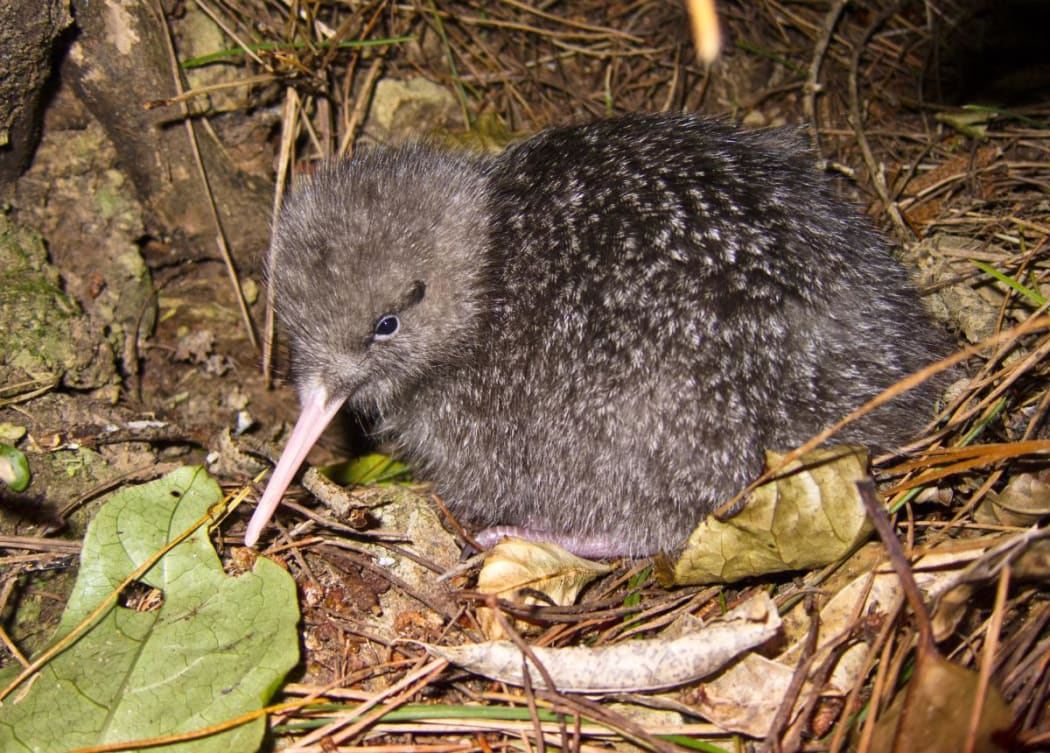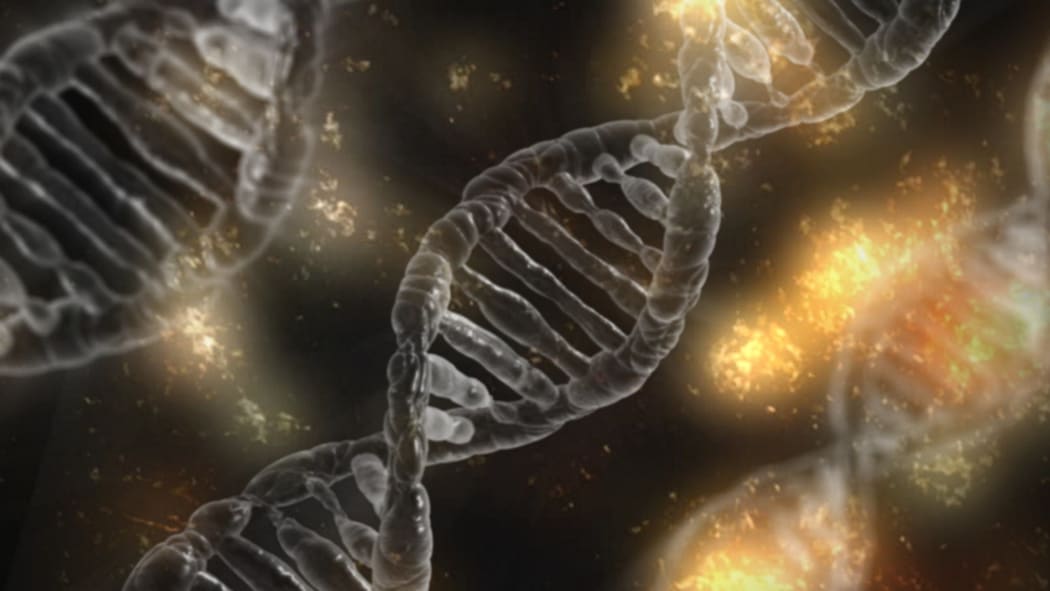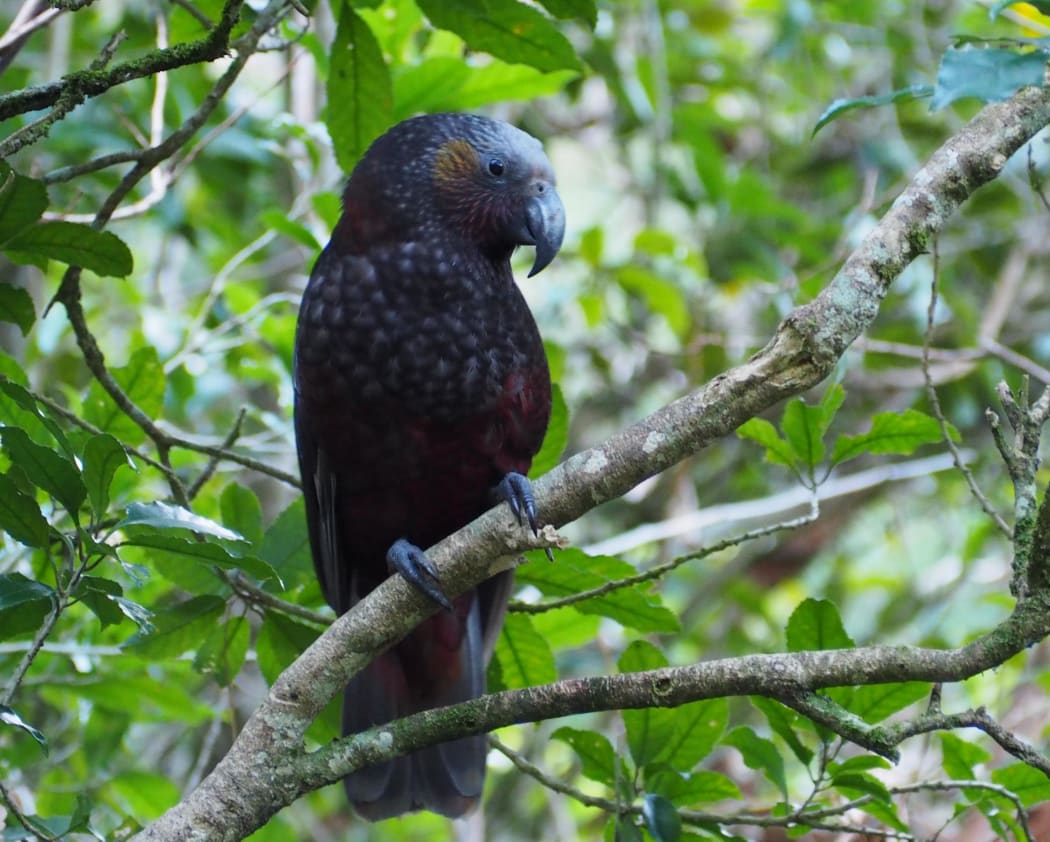Spare a thought for a little spotted kiwi chick. What genetic legacy is it burdened with – and how can conservation genetics give a helping hand?

Little spotted kiwi chick. Photo: Andrew Digby / DOC
A little spotted kiwi chick born a thousand years ago would have led a charmed life in a land of birds. New Zealand back then was covered in native forest, and there were no rats or stoats to threaten the abundant avian populations. That ancient chick was part of a huge clan of little spotted kiwi found across the country.
Fast forward to today and a modern kiwi chick is one of around 1700 birds, exiled either to a predator-free island or a fenced sanctuary. Much of New Zealand’s forest is gone, and the rats and stoats that roam the mainland would make short work of a small, flightless bird.
On one hand, little spotted kiwi are a success. From being confined to a single island – Kapiti – there are now 10 different populations.
On the other hand, numbers tell only part of the story. Little spotted kiwi chicks that hatch today share a terrible genetic legacy – they are all descended from just three birds, and have some of the lowest genetic diversity of any New Zealand bird.

Genetic diversity is a good thing - but many threatened species have low genetic diversity. Photo: Creative Commons CCO
A thousand years ago the multitude of little spotted kiwi that roamed our night forest boasted a diverse array of genes.
But today, many of those genes have been lost. The only genes that today’s little spotted kiwi have are the ones their three ancestors had. They have experienced what is known as population or genetic bottleneck.
To make matters worse, the only option for the offspring of the three ancestral birds was to breed with their siblings and even their own sons and daughters. Humans frown upon this practise with good reason. It causes inbreeding, and increases the chances of undesirable genetic combinations.
Even if these ‘bad’ genes don’t kill a bird outright, they may make it less resistant to diseases, for example, or affect its fertility.
More than half of the kakapo eggs laid in the past 30 years, for example, have been infertile. This is also the consequence of very low genetic diversity in the surviving kakapo population, which currently numbers just 153 birds.

Little spotted kiwi. Photo: CC BY 2.0 Biodiversity Heritage Library
Making matters worse
Conservation managers in countries such as New Zealand have saved many species by moving them to predator-free islands. However, these very actions may have inadvertently added further bottlenecks to species already struggling with low genetic diversity.
Helen Taylor, from the University of Otago, tells the story of little spotted kiwi on Long Island in the Marlborough Sounds. A handful of birds were moved there in the 1980s, but only a single pair of birds bred successfully.
Today, two thirds of the 50-strong population on the island are the sons and daughters of that original pair. Where are the second, third and even fourth generations of birds that we would have expected by now?
Helen suggests that “damaging genetic effects of inbreeding are strongly affecting hatching, survival and possibly reproduction of the subsequent generations."
Long Island kiwi put more effort into breeding than their cousins at Zealandia sanctuary in Wellington: they lay more than one egg per clutch and sometimes produce two clutches in a year. But despite this, Helen found that many of these eggs failed to hatch, because embryos failed to develop or were malformed.
So, on the surface, the Long Island kiwi population seemed to be a success, having grown to 50 birds. But the double legacy of a bottleneck and inbreeding suggests that it is unlikely to survive in the long term.
A helping hand
This is where genetics can give a helping hand. Scientists can identify the problem and assess the genetic diversity of other little spotted kiwi. They can also suggest the strongest candidates for a genetic rescue, to bring new birds in to boost the struggling population on Long Island.
Ancient DNA specialists are becoming involved in conservation as well. They can go back to museum specimens and identify what genes have been lost.
They can offer advice on the best source of birds to top up an ailing population. And perhaps, in the future, they will be able to take some of the ‘lost DNA’ from those museum specimens and use gene editing to reintroduce them into species to ensure a brighter genetic future.

Kaka. Photo: CC BY-NC 2.0 Doug Newdick
Hear more about the science of conservation genetics
The audio for this story was recorded at the recent Genetics Society of Australasia annual conference, held in Dunedin in July 2017, when Helen Taylor joined three other early career researchers in a public panel discussion held at Orokonui Sanctuary. Helen explained genetic bottlenecks and inbreeding.
Anna Santure from the University of Auckland talked about fitness, and how genetic diversity helps species adapt to different environments.
Michael Knapp talked about ancient DNA and how his lab at the University of Otago is assessing the best source population for a kaka translocation to Abel Tasman National Park.
Lee Rollins from Deakin University, in Australia, explained how work with invasive species might lead to better ways of controlling them, and also understand how some species can experience severe genetic bottlenecks without seeming to suffer any problems.


